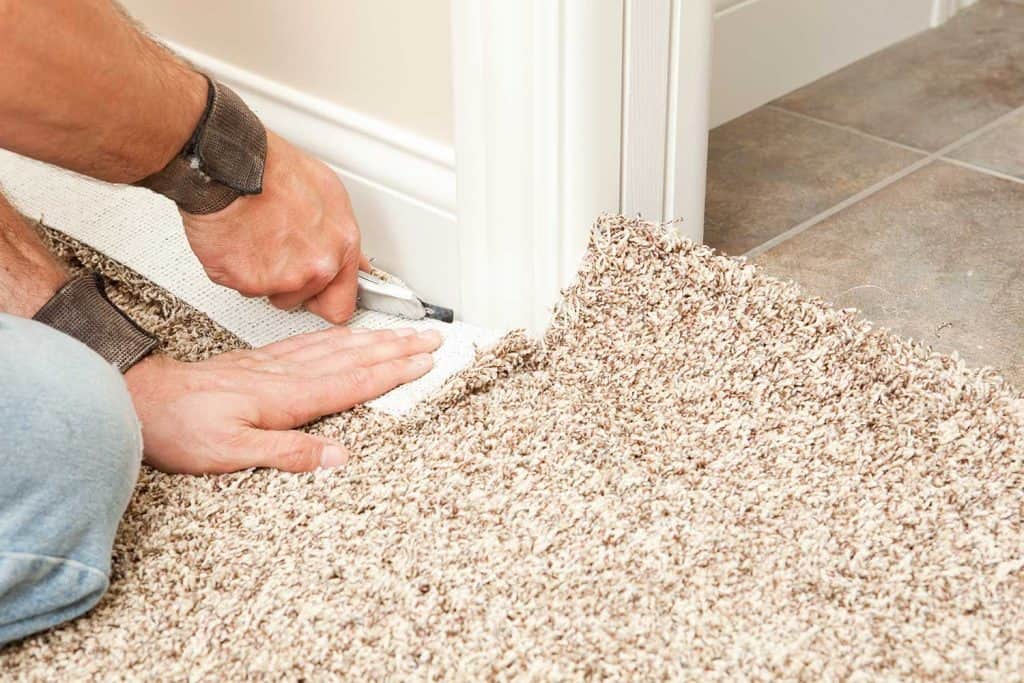One of the things that people don't like to discuss is the lifespan of the flooring they choose. Even the most well-kept carpet won't last forever. Eventually, the carpet will have to be replaced. Otherwise, it'll start to lose its tread, become patchy, or even potentially pose a hazard to your health. We've looked at the research out there to help you determine whether it's time for a carpet replacement.
Believe it or not, carpeting usually only lasts three to five years. This means that you probably should replace your carpet within five years of purchasing it. When it comes to modern housing standards, landlords are expected to replace their carpeting every seven years.
Most people are shocked to find out that they're in dire need of a carpet replacement. If you feel like you may need to give your carpeting a change, then hang on tight! We have a lot more information for you to be aware, so please keep reading.

What Is The Lifespan Of Carpet?
We sometimes add affiliate links and content that was curated and created by our team with the help of advanced ai tools to help showcase the best design styles.

Carpets are meant to be durable, but let's face it, there's a limit to how durable those fibers can be. Your carpet's durability depends not only on make-up but also on how frequently it is used, based on how many people live in your home. A typical carpet will last two to five years in a home with two to four people.
If you have a high-traffic area, you may notice your carpet starting to fray within a year of installation. At this point, you should start thinking about replacement earlier than the norm. However, it's not unheard of for people to keep their carpets long past their installation dates. Some even maintain them upwards of 20 years!
How Do You Know When To Replace Carpet?
There are a lot of signs that carpets give off when they need replacement. Thankfully, they're all pretty easy to spot if you are observant. If you see any of the signs below in your own carpeting, it may be time to consider a replacement.
- Your carpet is starting to pull apart at the seams, even with light tugs. Carpeting fibers are not supposed to fall off the carpet. If this is happening, it's because the glue and weaving that held your carpet together faded to the point of no return.
- If you notice that your carpet is starting to change color, it's time for a replacement. Old carpets sometimes start to lose their coloration, especially if they are vibrant shades like royal blue or fiery red.
- A carpet that's starting to get "bald spots" all over the place is a carpet that's long past its prime. It's best to replace it as soon as you notice this happening.
- Some carpets become increasingly difficult to clean after they expire. For example, if you were always able to get mud stains out of your carpet using typical methods but now can't seem to get them to budge, your carpet might be expired.
- If you notice signs of mold and mildew, then you may need a new carpet. This is often visible by an uptick in mold allergy symptoms as well.
- Carpets that retain odors that cannot be eliminated through regular means may also need replacement.
Why Does Carpet Age So Quickly?
This is a great question, and there's no single answer here. It's a variety of factors, many of which have to deal with the carpet's material. At the end of the day, carpet fibers are still a type of fabric. Much like any other type of fabric, your carpeting will have wear and tear as it continues to be used.
Every time you step on a carpet, you are rubbing the fibers against one another. All that rubbing and pressure will eventually harm your carpet. It's a lot like figuring out how long a sofa will last. It's all about how much traction your carpet fibers can handle.
A bigger issue that may contribute to your carpet's aging is that you might have to worry about is moisture levels. A room that is too moist can attract mold, which prematurely ages your carpet. If it's too dry, it lacks the moisture your carpet needs to maintain its malleability. This, in turn, can make the carpet brittle faster.
How Much Does It Cost To Replace Carpet?
Carpet replacement cost will vary depending on the size of the room and the type of carpet you're installing. Most carpets will cost between $3 to $6 per square foot. When you add labor on top of the materials, you're looking at a cost that is between $4 and $8 per square foot. If you want to read up more about the price of carpeting, check out our pricing article here.
Are Landlords Responsible for Replacing Carpet?

Most areas will require rental landlords to replace carpeting every seven years, or if the carpeting in question has sustained serious damage from something like a flood. Every state's Housing and Urban Development office will have its own requirements for carpet replacement.
Though each state has its own requirements, all states agree that it's the landlord's job to foot the bill for carpet replacement. If you are a renter who believes that a carpet replacement is long overdue, you also have the right to petition the landlord for this repair.
Can You Withhold Rent If Your Landlord Doesn't Replace Carpet?
In many renter-friendly states, renters have the right to withhold rent if their landlords do not keep the rental units safe for habitation---assuming renters maintain their apartments well. In the case of carpeting, it is possible to try to withhold rent if your carpeting has not been replaced in an adequate number of years.
However, there is a snag with this. Your landlord can (and most likely will) sue you for damages if you try this. If you are not sure whether it's worth a shot, your best bet is to discuss the matter with a real estate/tenant's rights lawyer.
Can Old Carpet Make You Sick?
Old carpeting needs to be replaced because it carries a risk of getting people sick from the accumulation of mold, mildew, and bacteria. Even if you are not prone to allergy attacks, an old carpet is not good for your environment. Because it can absorb so many pathogens, an old carpet can become dangerous to a person's health long-term.
Believe it or not, the risk of getting sick from old, threadbare carpeting is exactly why landlords are required to replace it periodically. This is an important issue that you should bring up with your landlord if they are hesitant about replacing your carpet.
How To Increase Carpet Longevity
The best way to make sure your carpeting lasts long is to maintain it well. Regular vacuum sessions, professional cleanings on a routine basis, and avoiding spills is the way to go. If at all possible, try to avoid walking on your carpet since traction tends to harm it more than other factors will.
If you want to go the extra mile for carpet protection, you can also get a protective treatment like ScotchGard. Studies show that it can marginally extend the life of carpeting when applied properly.
Click here to get Scotchgard from Amazon.
Conclusion
While most people have walked into homes that have carpeting that's decades old, this really isn't the way it's supposed to be. Carpeting usually goes bad between two and five years after it's been installed. It's a health issue, primarily since old carpeting can get mold, mildew, and other allergens growing inside of it.
Replacing old carpet isn't a "maybe." It's a must. Even landlords are expected to change carpeting every seven years as a result of the risk it can pose to their renters. Thankfully, there's always an upside to this news. While it may be a pricey thing maintain, being able to replace it so frequently means that you can change up the look of your home as you see fit.

